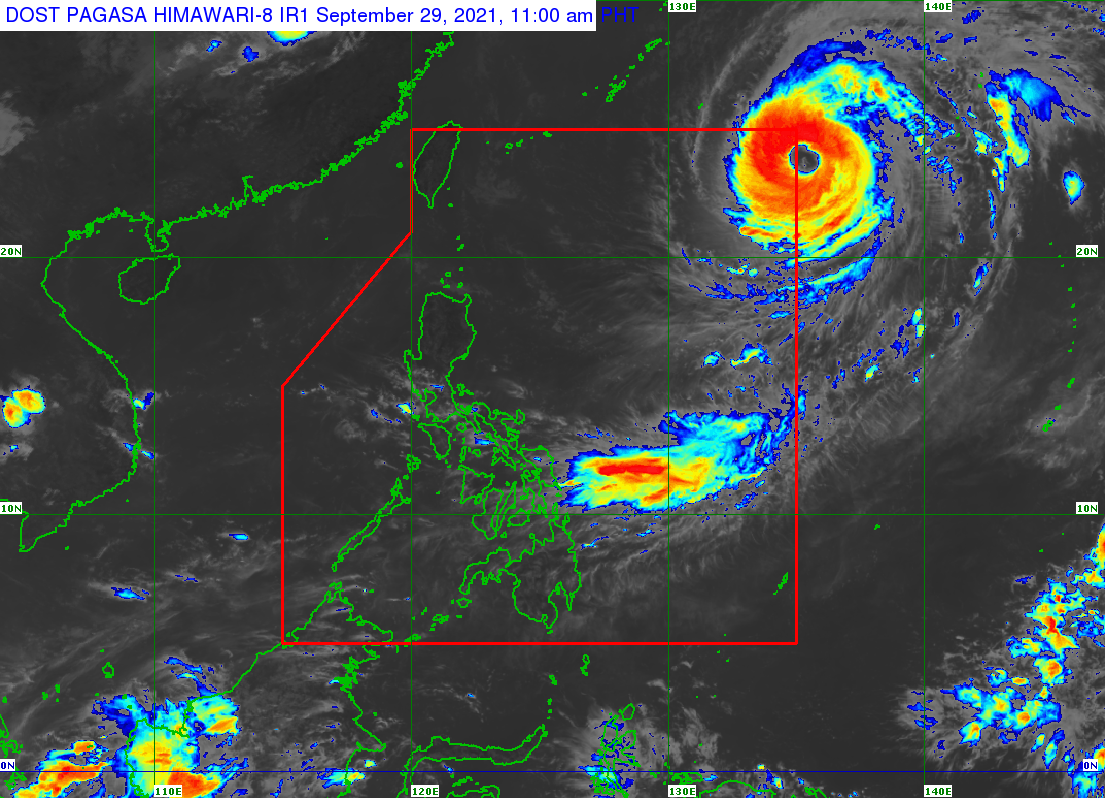SUMMARY
This is AI generated summarization, which may have errors. For context, always refer to the full article.

Typhoon Mindulle was moving near the northeastern boundary of the Philippine Area of Responsibility on Wednesday morning, September 29, with an “increasing possibility” that it would not enter PAR at all.
The typhoon was last spotted 1,420 kilometers east of extreme Northern Luzon, moving north northwest outside PAR at 15 kilometers per hour (km/h).
The Philippine Atmospheric, Geophysical, and Astronomical Services Administration (PAGASA) said Mindulle is expected to head north for the rest of Wednesday.
“Considering that the typhoon has been tracking generally northward over the past couple of hours, there is an increasing possibility that it may not enter the PAR region at all,” added PAGASA.
Even if Mindulle enters PAR, it would only move along the boundary and may exit within 12 hours. Weather in the Philippines will not be affected.
The typhoon would be given the local name Lannie once inside PAR. (READ: LIST: PAGASA’s names for tropical cyclones in 2021)
As of Wednesday morning, Mindulle had maximum sustained winds of 175 km/h and gustiness of up to 215 km/h.
PAGASA sees the typhoon possibly reaching a peak intensity of around 185 km/h on Wednesday. Then it may start to weaken “as it approaches the waters off to the south of mainland Japan.”
On Wednesday, however, the northern and eastern seaboards of Luzon have moderate to rough waters due to swells caused by Mindulle. A swell refers to “any system of water waves which has left its generating area,” as defined by the World Meteorological Organization.
Travel is risky for small vessels in the affected seaboards.
The Philippines has had 11 tropical cyclones in 2021. The yearly average is 20. (READ: FAST FACTS: Tropical cyclones, rainfall advisories) – Rappler.com
Add a comment
How does this make you feel?
There are no comments yet. Add your comment to start the conversation.